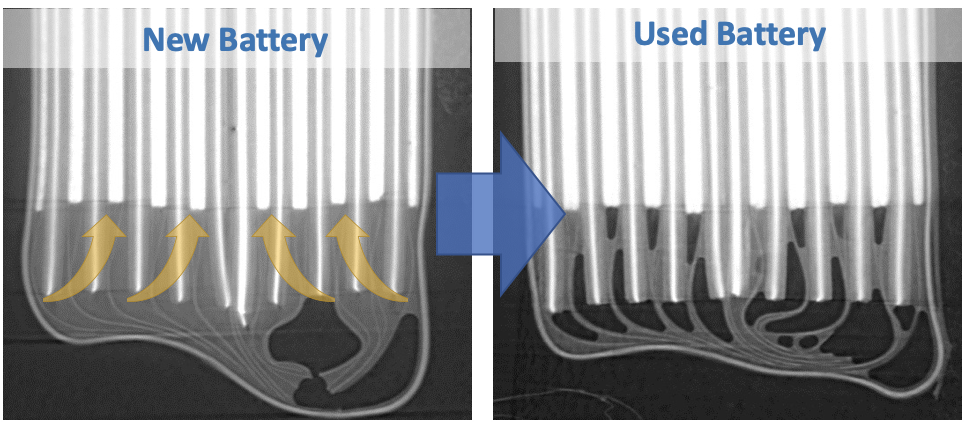How charge, discharge cycles make li-ion batteries bleed to death
According to the scientists, the cracks that affect batteries’ physical structure and, thus, their ability to store energy, are produced during the charge/discharge cycles.
“A big drawback to packing in more energy is that generally, the more energy you pack in, the faster the battery will degrade,” lead researcher Toby Bond said in a media statement.
Bond explained that in lithium-ion batteries, degradation occurs because charging physically forces lithium ions between other atoms in the electrode material, pushing them apart. Adding more charge causes more growth in the materials, which shrink back down when the lithium ions leave. Over many cycles of this growing and shrinking, micro-cracks begin to form in the material, slowly reducing its ability to hold a charge.

Traditionally, the cracks forming in a battery have been studied by taking the battery apart and looking at individual particles under an electron microscope. This destroys the battery, so it doesn’t allow researchers to preserve the larger structure and see what other effects this cracking might have on the rest of the battery.
By using X-ray imaging, Bond and his colleagues were able to study these effects in context and discovered that as micro-cracking in the battery gets worse, liquids in the cell are sucked up into the extra space between the cracks, which may not leave enough liquid to go around.
“This is the first time anyone’s been able to capture all of these effects happening together in a working battery,” the scientist said. “This depletion of liquid electrolyte can cause serious problems, since any part of the battery that doesn’t get enough liquid would essentially stop working.”
Bond and his team also found that draining the battery a small amount caused less deterioration than discharging the battery all the way. This is likely because a smaller change in charge causes less physical strain on the battery electrode materials over time.
In the group’s view, this effect is important to understand for new applications such as long-haul transport, electric aircraft, and using parked electric vehicles to store and deliver energy into the electrical grid. These scenarios often require using more of the battery’s full capacity before being recharged.
“As we start replacing more and more combustion-driven vehicles with electric vehicles, it’s really important to understand how batteries will behave under different conditions,” Bond said.




